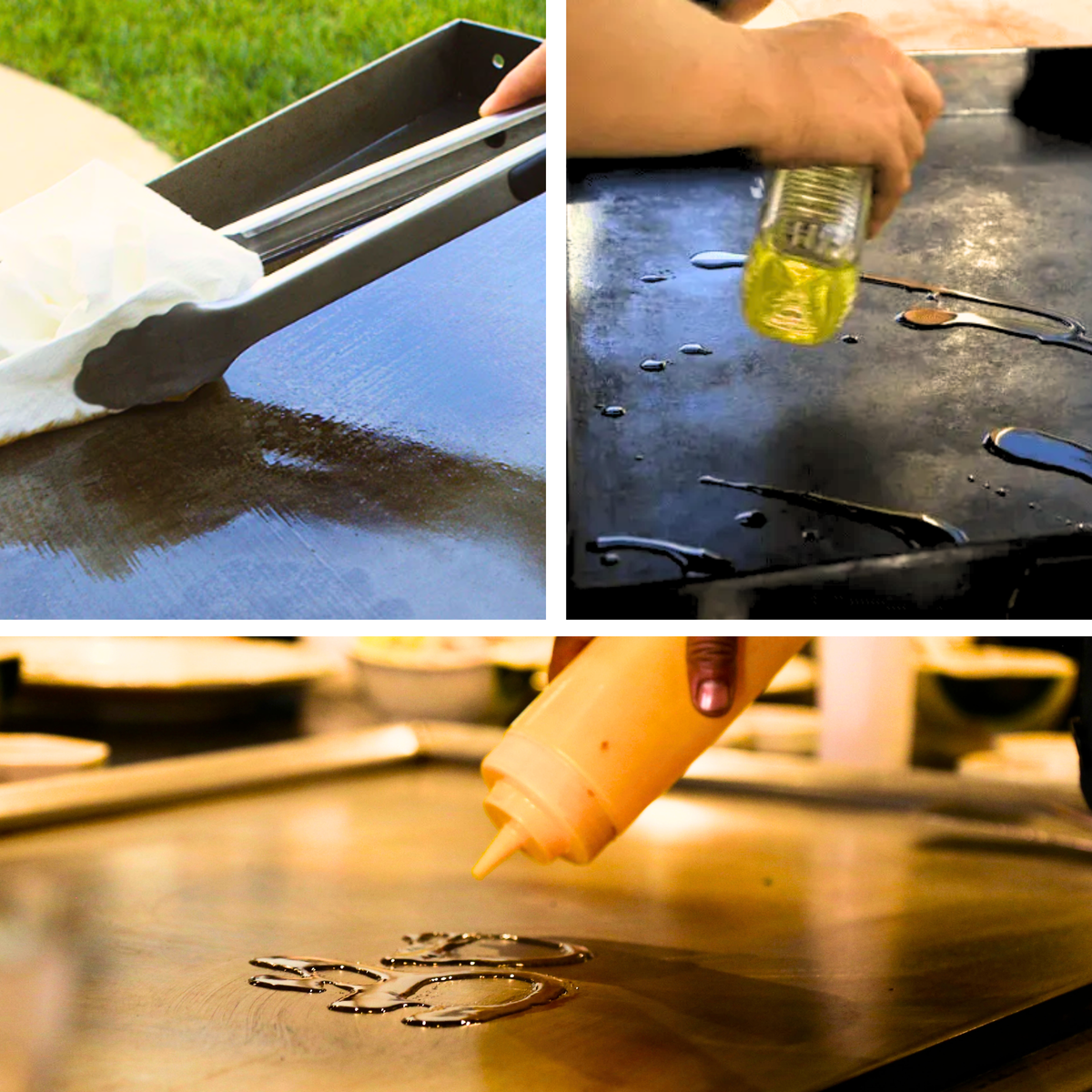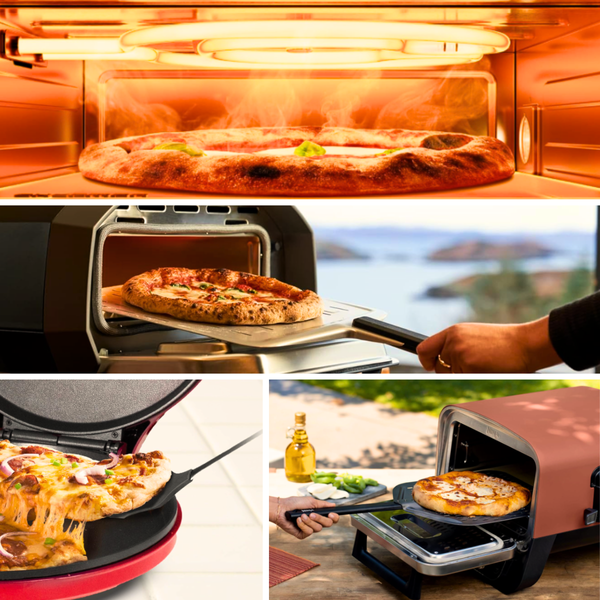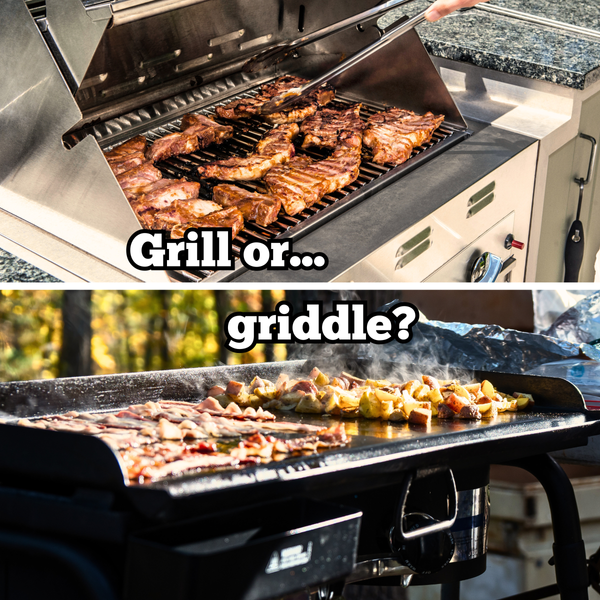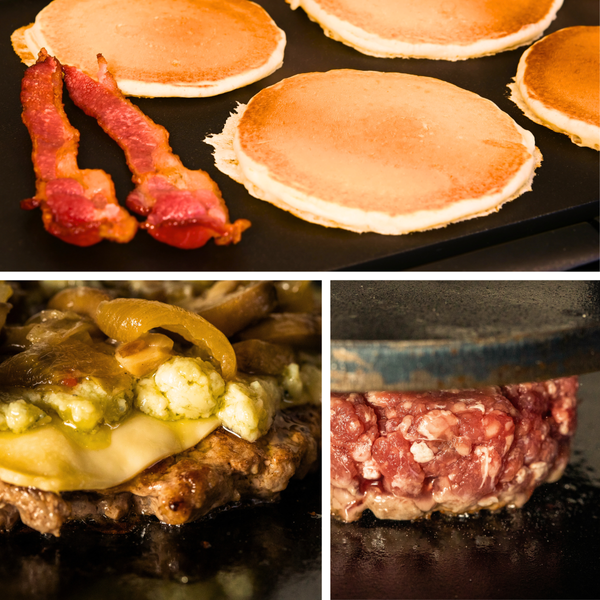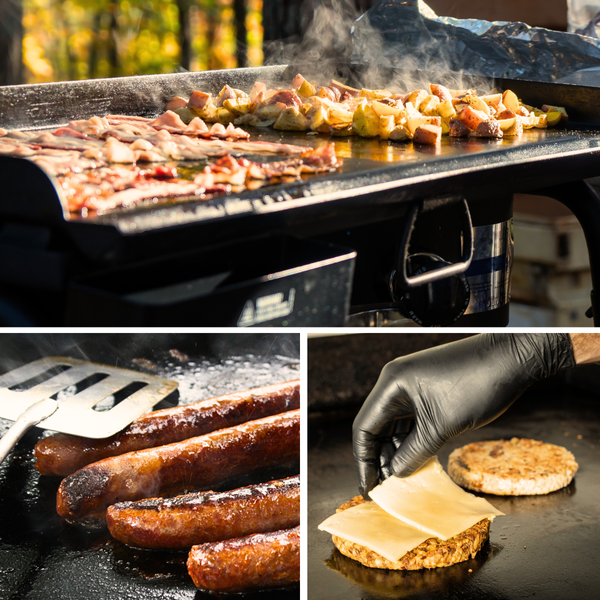Key Takeaways:
- Learn the step-by-step process to remove rust and season your flat top grill for optimal cooking performance.
- Discover the best types of oils to use for seasoning and how to apply them correctly.
- Understand the importance of maintaining the seasoning layer to prevent future rusting and ensure a non-stick surface.
Seasoning a flat top grill is an essential process for any grilling enthusiast. It not only prevents rust but also creates a non-stick surface that makes cooking and cleanup a breeze. Whether you've just purchased a new Blackstone griddle or you're looking to restore an old one, this guide will walk you through the process of transforming a rusty griddle into a ready-to-use cooking station.
The Science Behind Griddle Seasoning
Seasoning a flat top griddle isn't just a culinary tradition; it's a science. When you apply cooking oil to the griddle's surface and heat it, you're initiating a process called polymerization. This is where the fatty acids in the oil react with the iron on the griddle plate, creating a tough, non-stick surface. This layer not only provides an excellent cooking surface but also protects the metal from moisture, which can lead to rust in a humid environment.
Different oils can be used for seasoning, each bringing its unique properties to the table. For instance, flax oil is popular due to its high concentration of Omega-3 fatty acids, which form a hard, durable layer on the griddle. Coconut oil, with its high smoke point, is another excellent choice for achieving that perfect brown surface without burning off too quickly. Remember, the key to a successful seasoning is using an oil with a high smoke point and applying it in thin, even layers.
Assessing Your Griddle's Condition
Before you start the seasoning process, it's important to assess the condition of your flat top grill. If you're dealing with a new griddle, you may simply need to wash it with hot water and dish soap to remove any factory residues. However, if you're reviving an old griddle, you'll need to check for rust. Surface rust can be removed with a little elbow grease, but too much rust may require more intensive cleaning methods.
Removing Rust from Your Griddle
To remove rust from your griddle top, you'll need a few tools like a metal scraper, medium grit sandpaper, or a grill stone. Start by scraping off any excess rust with the metal scraper. For persistent rust, use the sandpaper or grill stone with a bit of hot water to scrub the surface rust away. Always wear heat resistant gloves to protect your hands during this process.
Cleaning the Griddle Surface
Once the rust is removed, it's time to give your griddle a thorough cleaning. Use a mixture of hot water and a small amount of dish soap to scrub the entire surface. Rinse with hot water and dry the griddle completely with a clean cloth or paper towels. It's crucial to let the griddle cool completely before moving on to the next step.
Utilizing Table Salt for a Clean Griddle Surface
Believe it or not, table salt is not just a seasoning for your food; it's also a fantastic cleaning agent for your gas griddle. When you're dealing with stubborn food residue on your griddle's surface, table salt can be your best friend. Its abrasive nature makes it perfect for scrubbing away bits of food without damaging the non-stick surface you've worked so hard to create.
To use table salt as a cleaning agent, simply sprinkle a generous amount over the warm griddle surface and use a cloth or a sturdy brush to scrub in a circular motion. The salt acts like tiny scrubbers, getting into every nook and cranny, ensuring a thorough clean. Once you've scrubbed the surface, rinse off the salt with water, and you'll find a clean, residue-free surface. This method is especially useful for maintaining your seasoned griddle between uses, keeping it in top-notch condition for your next culinary adventure.
Choosing the Right Oil for Seasoning
The type of oil you use for seasoning is important. You'll want to choose a high smoke point oil like canola oil, vegetable oil, or flaxseed oil. These oils form a durable seasoning layer due to their fatty acid composition. Avoid using low smoke point oils like extra virgin olive oil, as they can encourage rust and don't create a strong protective layer.
Applying the Oil
To season your griddle, apply a thin layer of oil to the entire cooking surface using a paper towel or kitchen towel. Ensure the layer is even and covers the entire surface of the griddle. Too much oil can lead to a sticky residue, so it's important to apply just enough to coat the griddle without pooling.
Tips for a Perfectly Seasoned Griddle
Achieving that perfect non-stick surface on your flat top griddle is all about technique. Start by ensuring your griddle clean is free from excess food and debris. Using steel wool or a metal scraper can effectively remove any leftover particles without damaging the griddle plate. Once the surface is clean, heat your griddle to open up the pores of the metal, which allows the oil to penetrate deeply and bond effectively during the seasoning process.
When it's time to apply the oil, opt for high-heat tolerant oils like sesame oil or flax oil. Spread a thin layer across the entire surface of the hot griddle using a paper towel or a dedicated oil mop. This creates the base for your non-stick surface. After the oil smokes and the griddle cools down, repeat the process several times. With each layer, you're building up that coveted non-stick patina that makes cooking and cleanup a breeze, and helps to avoid rust and wear over time.
Heating the Griddle
After oiling the griddle, turn on the heat to a high setting. The griddle heat should be high enough to cause the oil to smoke, which indicates that the seasoning process has begun. Allow the griddle to heat until the entire surface turns a dark brown color. This change in color signifies that the protective layer is forming.
The Importance of High Heat in Seasoning
When it comes to seasoning your flat top grill, understanding the role of high heat is crucial. High heat is the catalyst that transforms oil into a protective layer on your griddle's surface. By heating the oil beyond its smoking point, it breaks down and bonds with the cast iron or metal, creating that coveted non-stick surface. This process not only enhances the cooking performance but also fortifies the grill grates against wear and tear.
However, it's important to monitor the temperature closely. Too much heat can cause the oil to burn, leaving a sticky residue that's counterproductive. Aim for a consistent temperature that's hot enough to cause the oil to smoke lightly. This indicates that the oil is polymerizing, which is the scientific term for the chemical reaction that creates the non-stick layer. Remember, patience and control are your best tools when using high heat to season your griddle surface.
Repeating the Seasoning Process
For a well-seasoned griddle, you'll need to repeat the oiling and heating process several times. Each layer will build upon the last, creating a stronger non-stick surface that can resist wear and prevent rust. Typically, three to four rounds of seasoning are sufficient to establish a good base layer.
Cooking on Your Seasoned Griddle
Once your flat top grill is seasoned, it's ready for cooking. Foods like fried rice, pancakes, or burgers will now glide effortlessly across the griddle surface. The seasoning layer not only makes cooking easier but also enhances the flavor of your food.
Maintaining Your Seasoned Griddle
To maintain your seasoned griddle, avoid using abrasive cleaners or metal utensils that can damage the surface. Instead, use a metal spatula with smooth edges and clean the griddle with a grill brick or hot water after each use. Wipe away excess oil and food particles with a paper towel to keep the surface clean.
Preventing Rust in the Future
To prevent future rusting, always store your flat top grill in a dry, covered area. Humidity can cause the protective layer to break down over time, leading to rust. After cleaning, apply a light coating of oil to the surface before storing to help protect against moisture.
Summary
Seasoning your flat top grill is a straightforward process that requires some time and effort but pays off with a superior cooking experience. By removing rust, cleaning the griddle, choosing the right oil, and applying it correctly, you can create a durable, non-stick surface that enhances the flavor of your food and makes cleanup a breeze. Regular maintenance will keep your grill in top condition, ready for your next barbecue adventure.
FAQ Section
Q: How often should I season my flat top grill?
A: You should season your flat top grill whenever the surface starts to lose its non-stick properties or after cleaning it with soap and water, which can strip the seasoning layer. Regular maintenance after each use will help keep the seasoning intact.
Q: Can I use any type of oil to season my flat top grill?
A: It's best to use an oil with a high smoke point, such as canola oil, vegetable oil, or flaxseed oil, for seasoning. These oils create a better protective layer and are less likely to burn during the seasoning process.
Q: What should I do if my seasoned griddle starts to rust?
A: If you notice rust forming on your seasoned griddle, you'll need to remove the rust using a metal scraper or grill stone, clean the surface, and re-season the griddle following the steps outlined in this guide to restore the protective layer.



